In the vast expanse of our skies, certain avian marvels soar to extraordinary heights, captivating us with their aerial prowess. From the mighty condor to the swift alpine chough, the world is home to an array of high-flying birds that navigate the heavens with grace and skill. In this blog, we delve into the realm of avian flight to discover the top seven highest-flying birds known to humanity. These remarkable creatures have evolved specialized adaptations, from expansive wingspans to efficient airfoil designs, enabling them to ascend to dizzying altitudes. Join us on a journey to explore the habitats, behaviors, and unique characteristics of these magnificent birds as we uncover the secrets of their skyward journeys. Whether gracefully gliding above mountain peaks or riding thermal currents across vast distances, these birds exemplify the wonders of flight and the boundless possibilities of life in the skies.
Table of Contents
Toggle7 Highest Flying Birds in the World
Rüppell’s Griffon Vulture (Gyps rueppelli)
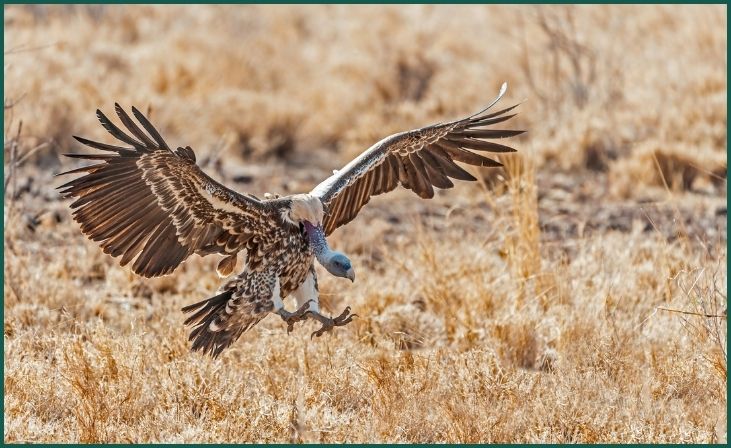
Rüppell’s Griffon Vulture, also known as Rueppell’s Vulture, stands out as the highest flying bird globally, often soaring to altitudes exceeding 37,000 feet (11,000 meters). Originating from Africa, these vultures possess impressive wingspans and a keen ability to exploit thermal updrafts, effortlessly ascending to remarkable heights. Their soaring abilities are essential for their scavenging lifestyle, enabling them to survey vast territories in search of carrion. These scavengers play a crucial role in the ecosystem, contributing to the efficient disposal of animal remains and maintaining ecological balance. Despite their formidable appearance, Rüppell’s Griffon Vultures are not aggressive towards humans and are often observed gliding gracefully across the sky, showcasing the majesty of avian flight at extreme altitudes.
For More – 8 Deadliest Animals In North America
Common Crane (Grus grus)
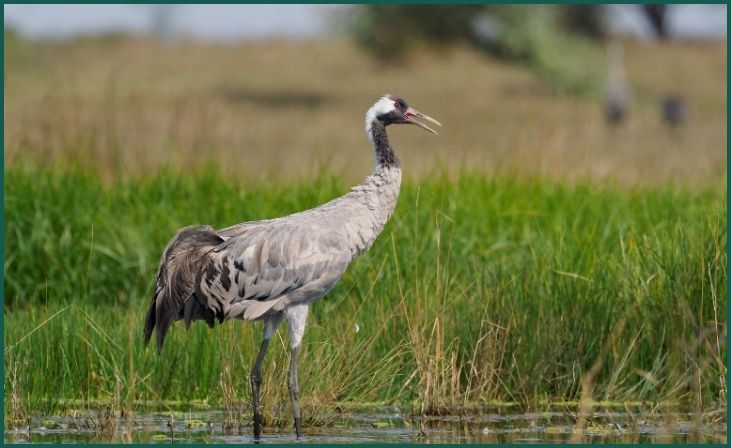
The Common Crane, also known as the Eurasian Crane, is renowned for its extensive migratory journeys, navigating the skies at altitudes reaching around 33,000 feet (10,000 meters). With their distinctive long necks, outstretched wings, and melodic calls, these elegant birds traverse continents during their annual migrations, covering impressive distances with precision and grace. Common Cranes often form impressive flocks during migration, creating mesmerizing aerial displays as they move in unison across the sky. These migratory patterns are crucial for their survival, allowing them to access distant breeding and feeding grounds across varied landscapes. Additionally, Common Cranes play cultural and symbolic roles in many societies, symbolizing longevity, wisdom, and harmony with nature.
Bar-headed Goose (Anser indicus)
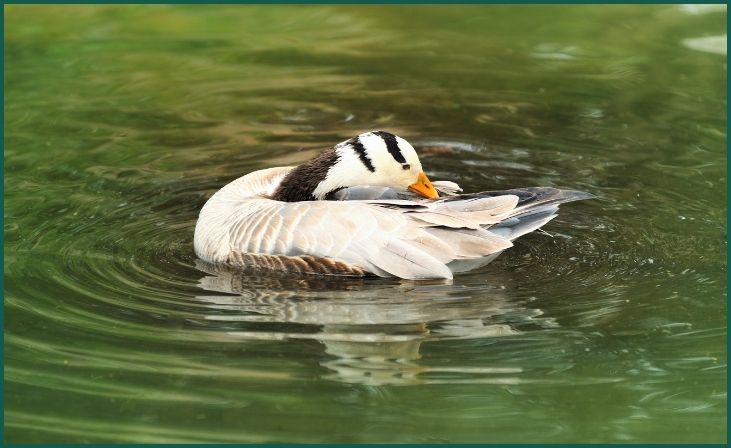
The Bar-headed Goose earns acclaim for its Himalayan migrations, soaring to altitudes up to 29,000 feet (8,800 meters). These journeys are facilitated by their specialized hemoglobin, enabling them to thrive in thin air at such heights. Bar-headed Geese undertake these challenging migrations between breeding and wintering grounds, showcasing remarkable physiological adaptations and navigational skills. Their migrations often take them over treacherous mountain ranges, where they brave harsh weather conditions and strong winds. Despite these challenges, Bar-headed Geese exhibit incredible endurance and resilience, highlighting their ability to conquer extreme environments. These majestic birds serve as a testament to nature’s adaptability and the extraordinary feats avian species can accomplish.
Alpine Chough (Pyrrhocorax graculus)
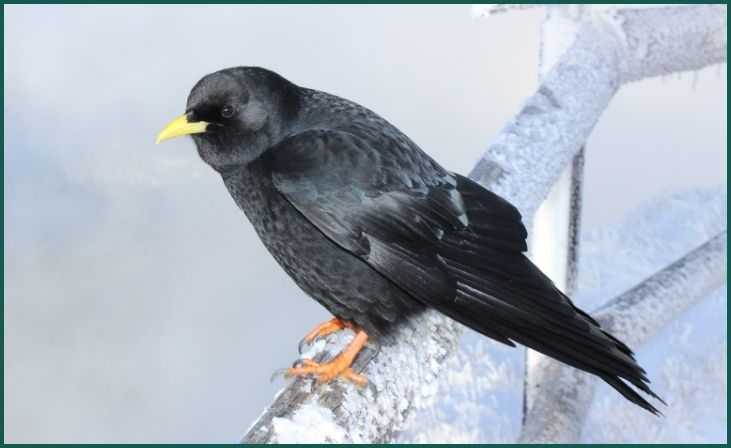
The Alpine Chough, a resilient and adaptable species, flourishes in high-altitude habitats exceeding 26,000 feet (8,000 meters). These agile fliers navigate mountainous terrains with ease, using their strong wings and sharp intelligence to forage for food and evade predators in rugged alpine environments. Their glossy black plumage, coupled with distinctive calls and acrobatic flight maneuvers, makes them a charismatic species to observe in their natural habitats. Alpine Choughs play important roles in alpine ecosystems, contributing to seed dispersal, nutrient cycling, and pest control. Their ability to thrive in challenging environments reflects the diversity and resilience of avian life, showcasing the fascinating adaptations of mountain-dwelling birds.
Don't just scroll, subscribe!
BuzzTrail's unique web-stories are the cure for boredom you've been waiting for.
Bar-tailed Godwit (Limosa lapponica)
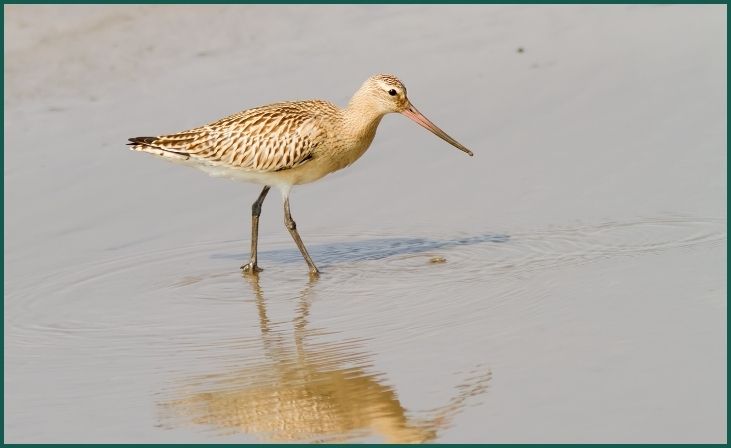
The Bar-tailed Godwit’s non-stop migrations, covering over 7,000 miles (11,000 kilometers), include flights at altitudes surpassing 20,000 feet (6,000 meters). These marathon flights across oceans and continents highlight their endurance and navigational abilities, providing insights into avian migration strategies and long-distance travel. Bar-tailed Godwits undertake these impressive journeys between breeding grounds in the Arctic and wintering areas in Australasia, relying on celestial cues, geomagnetic fields, and environmental cues for navigation. Their migrations are fueled by extensive pre-migration feeding, allowing them to complete these arduous journeys without stopping for food or rest. Bar-tailed Godwits’ remarkable migratory feats inspire awe and fascination, contributing to our understanding of avian behavior and ecology.
Mallard (Anas platyrhynchos)
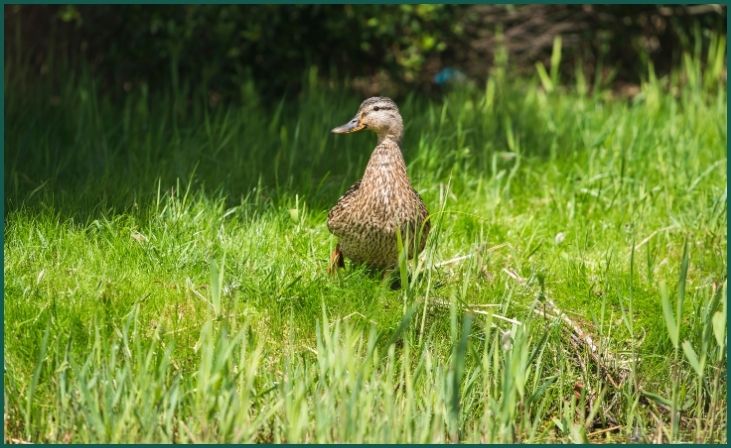
Mallards, though not traditionally associated with high-altitude flight, have been recorded flying at altitudes of approximately 21,000 feet (6,400 meters) during migrations. These adaptable and widespread ducks exhibit remarkable versatility and endurance during long-distance travels across diverse landscapes. Mallards undertake extensive migrations between breeding and wintering grounds, utilizing a network of wetlands, rivers, and coastal habitats along their routes. Their flights often take them over vast expanses of land and water, showcasing their navigational abilities and resilience in varying environmental conditions. Mallards play important roles in ecosystems as seed dispersers, insect predators, and indicators of wetland health. Their adaptability to diverse habitats and migration routes underscores their ecological significance and evolutionary success as a species.
Whooper Swan (Cygnus cygnus)
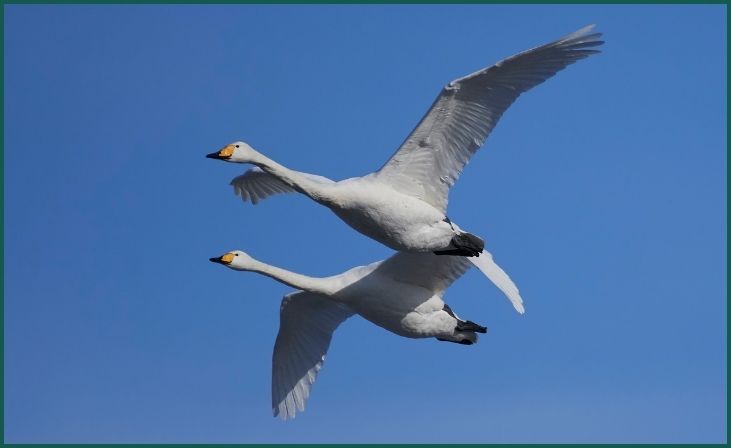
The Whooper Swan’s majestic flights, reaching altitudes up to 27,000 feet (8,200 meters) during migration, reflect their prowess in traversing vast distances. These graceful swans showcase the beauty and power of avian flight during seasonal movements, navigating landscapes and climates with precision and grace. Whooper Swans undertake extensive migrations between breeding grounds in the Arctic and wintering areas in Europe and Asia, relying on celestial cues, landmarks, and environmental factors for navigation. Their migrations are essential for accessing suitable breeding and feeding habitats, contributing to the maintenance of wetland ecosystems and biodiversity. Whooper Swans’ distinctive calls and elegant flight patterns add to their allure, making them iconic symbols of wild and pristine landscapes.
Also Read- 8 Most Beautiful Animals on the Planet
Conclusion
In the realm of avian marvels, the top 7 highest flying birds stand as extraordinary testaments to the wonders of nature’s design and the remarkable capabilities of avian flight. From the soaring heights of Rüppell’s Griffon Vulture, traversing African skies at over 37,000 feet, to the elegant migrations of the Whooper Swan, gracefully navigating vast distances at altitudes reaching 27,000 feet, these avian species showcase the diversity and adaptability of airborne life. Each bird’s unique adaptations, from specialized hemoglobin in Bar-headed Geese to resilient flight in Alpine Choughs, underscore their abilities to conquer extreme altitudes and challenging environments.
FAQs
What factors enable birds to fly at such high altitudes?
What factors enable birds to fly at such high altitudes?
Birds that fly at extreme altitudes have specialized adaptations, including efficient respiratory systems, high hemoglobin levels, and strong flight muscles. These adaptations allow them to cope with thin air and low oxygen levels at high elevations.
How do birds navigate during long-distance migrations?
How do birds navigate during long-distance migrations?
Birds use a combination of celestial cues, geomagnetic fields, landmarks, and environmental cues such as wind patterns and topography to navigate during migrations. Some species also rely on prior experience and genetic instincts to guide their journeys.

